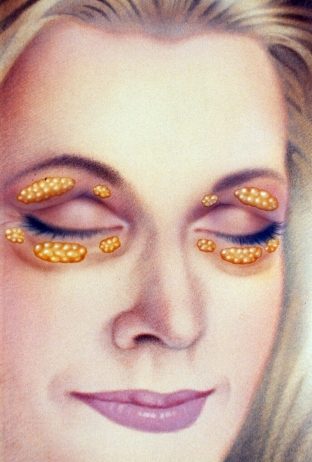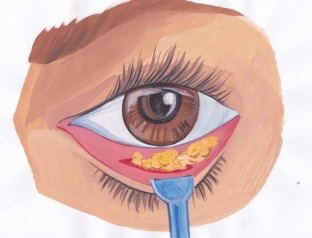Adipose tissue performs many important functions in the human body, the main of which are protective and energy. The body is designed in such a way that fat can be found not only on the abdomen or thighs, but also around the abdominal organs, and even in the eye area. Intraorbital fatty tissue plays an important role in maintaining the position of the eyeball in the orbit, but this tissue, like many others, undergoes aging processes, while playing a role in the occurrence of age-related changes in the face. Read about the importance of intraorbital adipose tissue in aesthetic facial surgery at estet-portal.com.
Intraorbital adipose tissue and its role in aging processes
In young people, the outer canthus of the face is located a few millimeters higher than the inner one, while the palpebral fissure has an almond-shaped shape. In maintaining the normal position of the eyeball in the orbit, the supporting ligament plays the main role, and to a lesser extent the intraorbital fatty tissue, which occupies almost the entire posterior half of the orbital cavity, and anteriorly is located in the slit-like openings between the orbit and the eyeball. It is through these spaces that the intraorbital fatty tissue extends to the anterior fascial septum.
Intraorbital adipose tissue:
- anatomical features of the location of the intraorbital fatty tissue;
- age-related changes in intraorbital fatty tissue;
- The role of intraorbital adipose tissue in the occurrence of enophthalmos.
Anatomical features of the location of the intraorbital fatty tissue
 From the point of view of aesthetic surgery, the presence in the anterior parts of the orbit of five pockets delimited from each other, which contain fatty tissue, is of the greatest importance. Two of them are under the upper eyelid, and three – below bottom:
From the point of view of aesthetic surgery, the presence in the anterior parts of the orbit of five pockets delimited from each other, which contain fatty tissue, is of the greatest importance. Two of them are under the upper eyelid, and three – below bottom:
- superior oblique muscle divides the intraorbital fatty tissue into outer and inner pockets, while the outer one extends to the lacrimal gland, enveloping it;
- inferior oblique muscle divides the fatty tissue in the lower part of the orbit into the central and internal pockets;
- The outer pocket is delimited by a fascial septum that continues to the suspensory ligament from the inferior rectus.
Age-related changes in intraorbital fat
Age-related changes in the intraorbital adipose tissue are manifested in the formation of its protrusions, the so-called fatty hernias. With age, the orbital fascial septum weakens, becomes thinner and gradually stretches, which leads to the displacement of adipose tissue in the anterior parts of the orbit. It is currently believed that the omission of the eyeball with a decrease in the distance between it and the bottom of the orbit & nbsp; is the basis for the displacement of the skin, circular muscle and orbital fatty tissue forward with stretching of the orbital septum. In most cases, the main cause of fatty herniation is the relaxation of the suspensory ligament of the eyeball with fat protrusion forward.

The role of intraorbital adipose tissue in the occurrence of enophthalmos
An important role is played by the shift of adipose tissue in the occurrence of enophthalmos – deep location of the eyeball in the orbit. The displacement of intraorbital fat entails a corresponding displacement of the eyeball down and back, which underlies the formation of enophthalmos. An important role in its occurrence is played by such factors as:
- age-related or genetically based drooping of the eyeball;
- the presence of fatty hernias with redistribution of fatty tissue in the anterior parts of the orbit;
- excessive removal of adipose tissue;
- excessive coagulation of intraorbital fat;
- resorption of orbital fat that occurs with age.







Add a comment